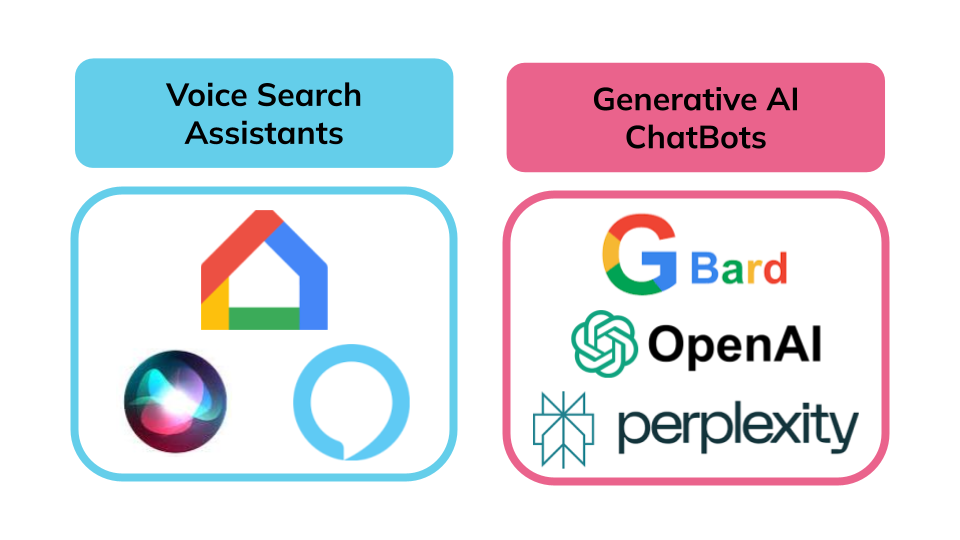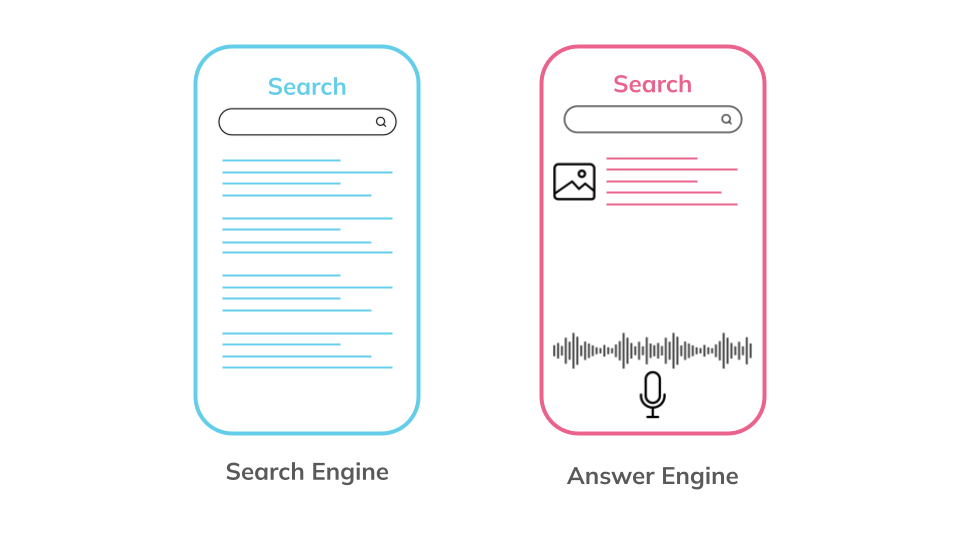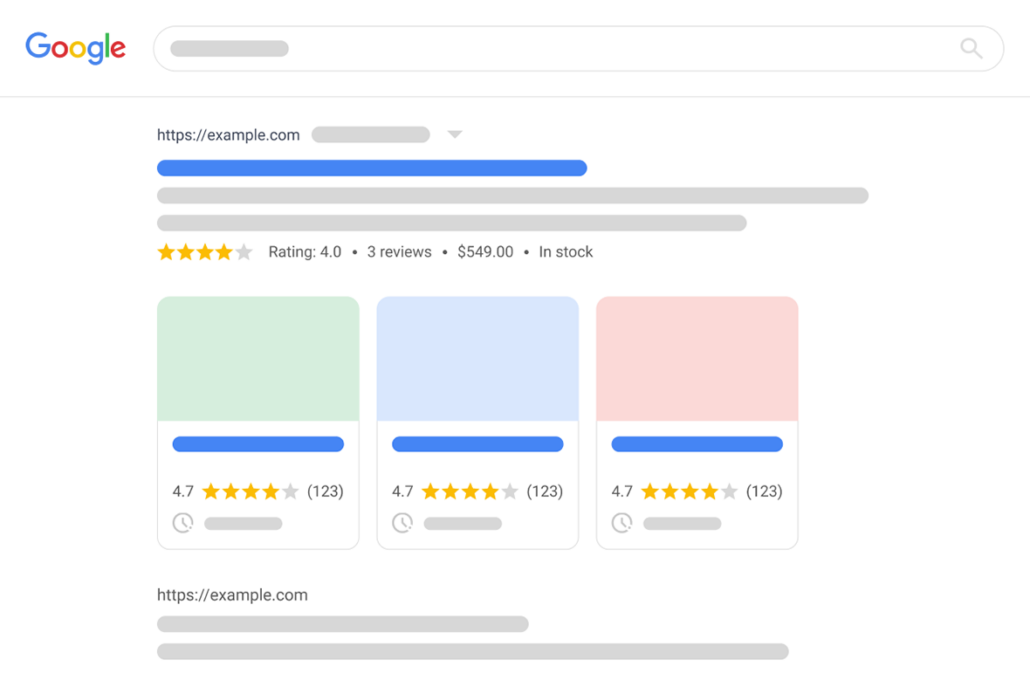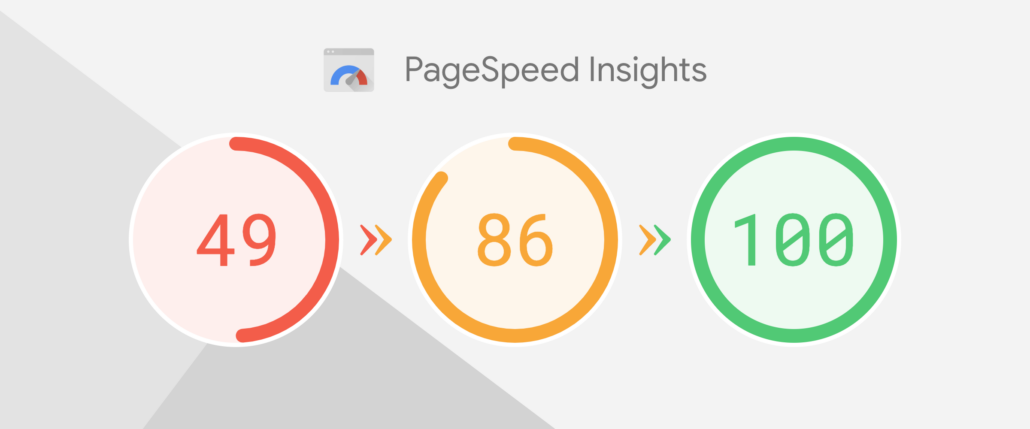The recent emergence of powerful, intuitive and easy-to-use AI technologies is transforming how people discover, create and engage with information. And one of the areas most affected by this transformation is web search.
Thanks to AI, the way people look for information, and the way it’s presented to them, is currently undergoing a genuinely unprecedented change. In recent months we’ve witnessed the emergence of numerous AI-powered answer engines and the surge of voice search (some 50% of the U.S. population using voice-enabled search each day).
If you manage an eCommerce website, it’s going to be very important to understand and be aware of these shifts. They will have a significant impact on how you run your domains.
In this article, we’ll dive into the concept of answer engine optimisation, explore its significance for eCommerce brands, and predict where this exciting journey will take us in the future.
Main Takeaways:
- Understanding Answer Engine Optimisation (AEO)
- Impact of AEO on eCommerce Brands
- Optimising Content for AEO
- Enhancing User Experience
- Measuring AEO Success
- The Future of Search and Answer Engines
Understanding Answer Engine Optimisation (AEO)
What are Answer Engines?

Answer engines are AI models designed to provide users with a single, comprehensive answer to their questions, eliminating the need to click through multiple results and sources. Their goal is to ensure users receive valuable, useful, and relevant information based on their question’s intent. Answer engines, which are powered by large language models (LLMs), are AI-powered and come in various forms. Examples include ChatGPT, CoPilot, Perplexity, Gemini, Siri, and Alexa, to name a few.
Answer engines are revolutionising how users interact with information. Until very recently, users had to sift through numerous search results to find the answers they needed. Now, with answer engines, a short summary is provided on the results page, which may remove the need to visit a website at all.
This shift is changing user behaviour significantly. People are increasingly relying on voice-activated assistants and AI-driven chatbots to get immediate answers. This trend towards instant, conversational search is making the digital experience more intuitive and user-friendly. This represents a major change in how we access information online.
What is Answer Engine Optimisation (AEO)?
Answer engine optimisation (AEO) is the process of tailoring content so it will be favoured by AI-driven answer engines. Unlike traditional search engine optimisation (SEO), which focuses on improving a website’s visibility on search engine results pages (SERPs), AEO aims to ensure that content is selected and delivered directly by AI models like ChatGPT, Siri, and Alexa.
While SEO is primarily concerned with keywords, backlinks, and technical aspects of a website to improve its ranking on Google or Bing, AEO emphasises creating concise, accurate, and contextually relevant content that can satisfy user queries in one go. This means understanding the intent behind questions and providing clear, authoritative answers that these AI systems can easily interpret and relay to users.
AEO requires a shift in content strategy, focusing more on conversational language, structured data, and semantic search optimisation. The ultimate goal is to have your content featured as the definitive answer when users interact with their AI assistants or search engines’ answer boxes. As user behaviour shifts towards relying on these instant answers, adapting to AEO becomes crucial for maintaining visibility and relevance.
Impact of AEO on ecommerce Brands
How Answer Engines Are Changing The Way Users Find and Interact with Commercial Content

Answer engines are changing user behaviour, and impacting how people search. This will have significant effects on eCommerce stores and their performance in the online marketplace.
This shift is most noticeable in the awareness and consideration stages of the customer journey. For example, when a user is in the consideration phase, they are typically comparing different types of products and trying to find the right one for them. An answer engine can provide clear, concise, and easily accessible information based on the user’s specific queries. For example, questions like “Which running shoes are best for marathons?” or “What’s the difference between the ASICS Metaspeed and the Nike Stride?” are common during this phase.
Traditionally, affiliate, comparison sites, and review platforms performed well organically by offering detailed comparisons and reviews of competing brands, focusing on aspects like functionality, performance, and durability. However, answer engines mean users may be able to circumnavigate these websites. They get quick, accurate and straightforward answers without having to open a new web page.
What do Answer Engines Mean for eCommerce Performance?
It’s still early days for answer engines, and it’s not entirely clear how they’ll affect eCommerce stores. But here are some likely outcomes:
- Potential increased visibility: Answer engines present an opportunity for increased visibility through an additional channel. It’s still early days, but at search events, industry insiders have discussed tests showing that visibility through answer engines is often credited to direct or occasionally affiliate sources, rather than organic. But there is still potential for increased exposure through these new avenues.
- Less traffic possible: With the increase in immediate visibility, there is a risk of reduced website traffic overall. This is particularly true for informational searches. If a user’s question is answered directly within the search results or their original query, they have no need to click through to your website for further information. This will lead to an increase in zero-click searches, which is something historically seen as a result of improved and enhanced featured snippets. Additionally, in some instances, answer engines do not even cite their sources, merely using them to learn from, thus providing no potential for click-throughs and subsequent traffic.
- Better quality traffic: On the flip side, the traffic you do receive through answer engines is likely to be of much higher quality. Users who have had their initial questions answered and are directed to your site are more engaged and interested in learning more.
- User experience: This new search platform also presents the opportunity for an enhanced user experience, not only by providing immediate, accurate answers but also through the personalisation of responses based on user data and preferences. This means that answer engines can create more tailored shopping experiences and improve customer satisfaction within the SERP or the response they provide—something that current search engines like Google have only limited control over.
Optimising Content for AEO
So, how can your eCommerce brand incorporate an answer engine optimisation (AEO) strategy within your existing SEO strategy?
The good news is that there is considerable overlap between SEO and AEO. However, you will also need to ensure that you accurately target and create content specifically for answer engines and, in turn, for users.
Targeting Featured Snippets

To begin with, develop a strategy to target featured snippets within SERPs. This practise isn’t necessarily new – it’s likely something you’re already doing. However, a few adjustments are needed to ensure it is also valuable to answer engines. Start by creating a content strategy aimed at capturing various featured snippets, such as:
- People Also Ask
- Lists
- Tables
- Rich snippets
- Knowledge boxes
For more detailed guidance, refer to our article on optimising for featured snippets.
The key for success with answer engines is to identify the most common questions and queries your target audience is asking. This involves thorough keyword research and a deep understanding of the user intent behind those queries. Once you have compiled a list of these questions, categorise them based on the different content across your website. Create high-quality, concise, and authoritative content that directly answers these questions. Ensure that your answers have clear headings, bullet points, and very concise explanations so that both users and answer engines can easily understand and learn from them.
Voice Search Optimisation

A study in early 2024 found that the majority of traditional (typed) Google searches are three to four words long. However, searches completed via answer engines are far more conversational.
Why is this? Essentially, these searches are often activated through voice and tend to go a step deeper. People are getting used to searching for information using answer engines like Siri and Google Assistant (Apple recently partnered with OpenAI to enhance their Siri model for this very reason).
- Example traditional typed Google search: Green cargo shorts
- Example long tail answer engine search: Hey Siri! Give me a list of green cargo shorts for men that cost less than £50 from well-known brands
What this means is that eCommerce stores now need to ensure their content aligns with voice search optimisation. This involves creating content that is conversational, using natural and flowing language similar to everyday conversations. eCommerce stores need to target those longer tail keywords within their questions and answers, as well as the overall content they create.
To optimise for voice search, focus on finding commonly asked customer questions and answering them in a conversational format. Here are some tips for doing this:
- Ensure that the data is clearly readable, accessible, and digestible.
- Structure your content with clear headings and bullet points
- Use simple, direct language
- Create FAQ sections where relevant on your pages and blogs
By doing this, you enhance the likelihood that your content will be picked up by voice search and answer engines.
Schema Markup and Structured Data

Simplifying somewhat, schema markup and structured data essentially help crawlers, such as Googlebot, to easily identify and distinguish the information you’re providing on your eCommerce site. When it comes to optimising schema markup and structured data for answer engines, there are a few elements we need to ensure are in place, with a particular emphasis on accurate and useful information being provided within the schema.
By providing streamlined access and an overview of all the content on your site through structured data markup, you are ensuring that answer engines understand the context around your business as an entity. This includes the products you offer, any physical presence you may have (which can be marked up through local business schema), and reviews, which are highly impactful during the consideration phase of information queries. Users often compare products or seek insights into usage, quality, and customer opinions before making a purchase decision.
Structured data not only helps answer engines accurately interpret your content but also enhances the way this information is presented to users. By including local business schema, you make it easier for potential customers to find and visit your physical stores. Incorporating review schema allows users to see ratings and reviews directly in search results, influencing their purchasing decisions positively.
Enhancing User Experience
User Centric Approach to Content
Answer engines are incredibly user-centric and aim to enhance the overall experience by providing immediate answers to user queries, as well as addressing potential follow-up questions.
eCommerce websites, therefore, need to ensure the content they produce can be understood by answer engines (so they, in turn, will relay it to searchers).
Remember, however, the goal isn’t to ‘game’ the system, so you get ChatGPT, CoPilot or Siri to repeat information found on your company’s website. Instead, the goal should always be to create content that is genuinely valuable for users – whether they encounter it in an answer engine, or on your website. This approach aligns with Google’s emphasis on quality content, as seen in their updates focusing on helpful content and the principles of E-E-A-T (Expertise, Experience, Authority, and Trust). These are the same signals that answer engines consider when evaluating and ranking your content.
By ensuring your content is user-focused, you help answer engines learn from reliable, trusted sources of information. This not only improves your visibility in answer engine results but also builds trust and credibility with your audience. High-quality, user-centric content is the cornerstone of both traditional SEO and AEO, ensuring that users receive the best possible answers and experiences when engaging with your brand.
The Importance of Page Speed Performance for Answer Engines

The speed and mobile-friendliness of your website play crucial roles in providing a seamless user experience. They’re also valuable when optimising for answer engines.
Fast-loading pages are essential because they reduce waiting times, ensuring that users can access the information they need almost immediately. This is particularly important for answer engines, which prioritise delivering quick and efficient responses to user queries.
Similarly, ensuring that your website is mobile-friendly is paramount. Answer engines, like Google’s mobile-first indexing, prioritise content that is easily accessible and performs well on mobile devices. By optimising your site for mobile, you not only enhance the user experience but also increase the likelihood of your content being featured prominently in answer engine results.
Measuring AEO Success

To effectively track and measure the success of your AEO strategies, it is crucial to monitor key performance indicators (KPIs) that reflect how well your content is performing in answer engine results.
Below are some useful KPIS you can track:
- One of the primary metrics to track is the appearance of featured snippets. Tools like Google Search Console and third-party SEO platforms such as SEMrush and Ahrefs can help you identify which of your pages are being selected for featured snippets.
- Voice search traffic is another important metric to consider. As voice search becomes more prevalent, tracking the volume of voice search queries leading to your site can provide valuable insights into your AEO performance. Tools like Google Analytics can help you identify traffic from voice searches by examining query length and natural language patterns.
- Overall search engine visibility is also a critical measure of your AEO success. This includes tracking your rankings across traditional search engines and observing any changes in your organic traffic. Tools like Moz and SERP tracking software can help you monitor your search engine rankings and visibility over time.
- To gain a comprehensive understanding of your AEO performance, consider setting up custom dashboards that aggregate data from various sources. These dashboards can provide a holistic view of your featured snippet appearances, voice search traffic, and overall search engine visibility, enabling you to track progress and identify areas for optimisation. Regularly reviewing these metrics will help you stay on top of your AEO strategy.
The Future of Search and Answer Engines

As answer engines are further developed and refined as search tools, we are going to continue to see a shift in user behaviour when it comes to search. As a result, it is very likely that we will see a reduction in the dominance that Google has within the realm of search engines, with answer engines exploiting this new sector.
Currently, Google accounts for 91.54% of the global search engine market, with 66% of web traffic referrals coming from Google. Over time, both in the short and long term, this dominance is likely to decrease as answer engines become more prevalent.
It is also likely that we will see answer engines finding ways to commercialise their results to some extent. Running answer engines incurs relatively high costs, including the development of AI tools, hosting services, and the crawling budget needed for them to continue learning, growing, and developing.
We are already seeing this with Google’s Search Generative Experience, which is not triggered for all searches and needs to be manually activated by the user, partly due to cost considerations. Going forward, I believe these types of answer engines will find ways to drive revenue through the answer pages they provide. One potential method could be similar to how Google serves paid product tiles at the top of commercial searches, allowing answer engines to charge cost-per-click on paid tiles within the answer results.
Another exciting change is that it seems likely that new tools will emerge that allow eCommerce website owners to conduct additional research and gain insights into how users interact with answer engines, similar to what we see with SEMrush, Ahrefs, and Moz for traditional search. These tools will enable us to define and create specific target strategies for answer engine optimisation, improving the quality of content and tailoring it more specifically for audiences.
A final takeaway regards the quality of content you produce. The emphasis on quality content is more prevalent now than ever, and eCommerce website owners need to ensure that they’re providing genuine value to users to stay ahead of the game.



